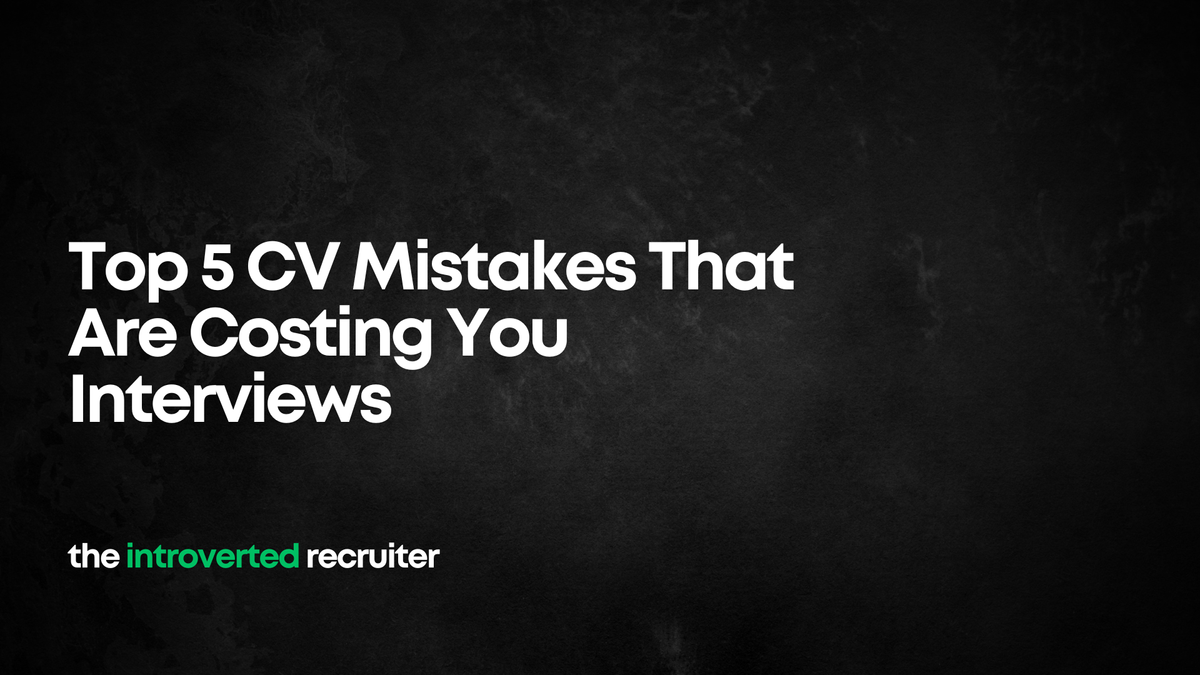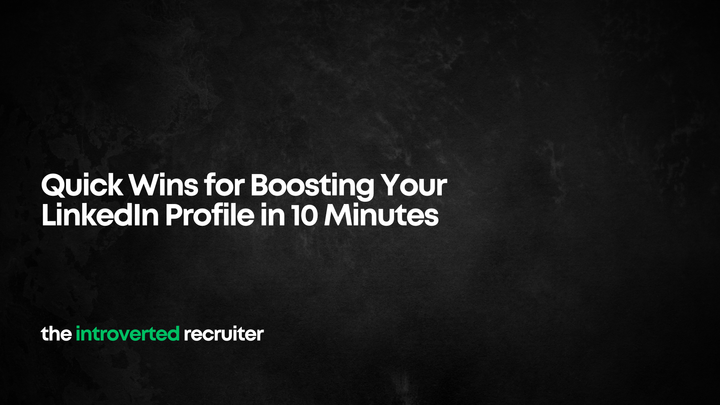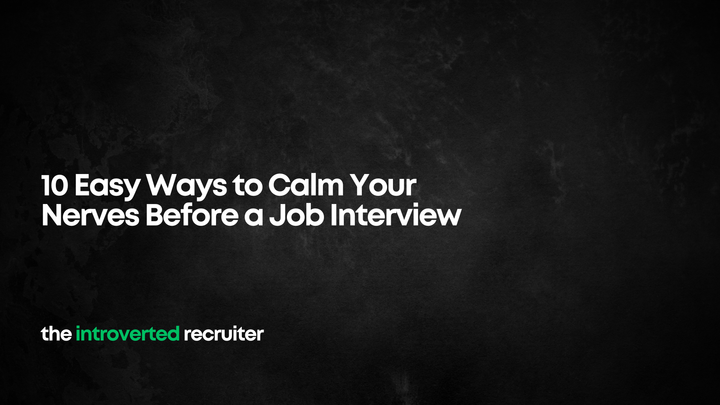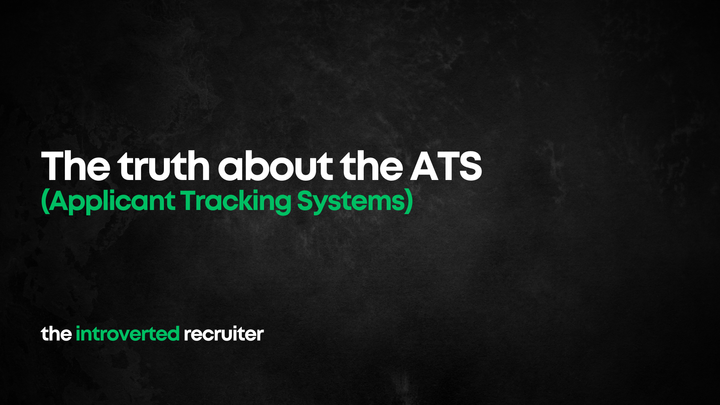Top 5 CV Mistakes That Are Costing You Interviews

Let’s cut to the chase—if you’re not getting interviews, chances are your CV isn’t doing its job. The purpose of your CV isn’t to tell your life story or list every job you’ve ever had—it’s to get you in the room for an interview. That’s it. Once you’re there, your CV has served its purpose. Yet, so many job seekers make the same critical mistakes that send their CV straight to the “no” pile.
After 20+ years in recruitment, I can tell you that recruiters don’t have time to read your CV word for word. They’re skimming, looking for key info that shows you’re worth a call. So if you’ve been applying to jobs without hearing back, it might be time to take a hard look at your CV and see if you’re making one of these five common mistakes.
Use my Free CV Template to get started or my Free CV Review Tool to get feedback on your CV.
1. Overloading Your CV with Too Much Information
Let me get straight to the point: recruiters don’t have time to read your entire CV. They’re not going to pour over every line or dive deep into your backstory. On average, recruiters spend 6–10 seconds on the first pass of your CV. If you’re overloading it with too much text or irrelevant information, you’ve already lost them.
The fix: Keep it concise. Use bullet points, short paragraphs, and plenty of white space to make it easy to skim. Your CV should be a snapshot of your most relevant experience, not an autobiography. Start with the most critical information right at the top—the skills, experience, and achievements that align with the role you’re applying for.
Action step: Go through your CV and cut any irrelevant or outdated information. Focus on your last 5–10 years of experience, unless something earlier is directly relevant to the role.
2. Not Tailoring Your CV to the Job Family
One of the biggest mistakes I see is when job seekers use the same generic CV for every application. If you’re not tailoring your CV to each job family, you’re doing yourself a massive disservice.
Remember, the goal of your CV is to make it clear why you’re the perfect fit for this specific role. That means you need to speak the language of the job description and highlight the skills and experiences that match what they’re asking for.
The fix: Tailor your CV to each job type you apply for. This doesn’t mean rewriting your entire CV from scratch every time, but you should be adjusting your profile summary, skills, and key achievements to align with the type of job your applying for. For example don't use a CV that is focused heavily on your customer service skills when applying for sales roles and vice versa.
Action step: Before applying for your next role, go through the job description and pull out the top 3–5 skills or qualifications they’re asking for. Then, adjust your CV to highlight how you meet those requirements.
3. Focusing on Responsibilities Instead of Achievements
This is a big one. Too many people fill their CVs with a list of responsibilities—basically a rundown of what they were supposed to do at each job. That’s fine, but recruiters are far more interested in what you actually achieved. Did you save the company money? Did you lead a team to a successful project completion? Did you streamline a process that improved efficiency?
The fix: Quantify your achievements. Whenever possible, use numbers to show the impact you made in your previous roles. For example, instead of saying “responsible for managing projects,” say “managed 10 projects simultaneously, delivering each one on time and under budget, resulting in a 15% reduction in operational costs.”
Action step: Go through each job on your CV and replace vague responsibilities with specific achievements. If possible, add metrics that quantify your success (percentages, dollar amounts, time saved, etc.).
4. Neglecting the First Half-Page
Here’s the cold, hard truth: if you don’t grab the recruiter’s attention in the first half-page of your CV, the rest might not even get read. The top half of your CV is prime real estate, and you need to make the most of it.
Recruiters want to know three things immediately:
- What you’ve done.
- Where you did it.
- What you achieved.
If you bury this information in the second or third page of your CV, you’re missing your chance to make a strong first impression.
The fix: Put your most important information right at the top. Use the first half-page to showcase your key skills, your most relevant experience, and your top achievements. Make sure it's easy to read and gives a snapshot of why you’re the perfect fit.
Action step: Take a look at the first half-page of your CV. Is it grabbing attention? If not, restructure it so that your best and most relevant information is front and center.
5. Using an Outdated or Overly Complicated Format
Let me tell you, fancy fonts and colorful graphics don’t make a CV stand out in the way you might think. In fact, they can often work against you, especially with most Applicant Tracking Systems (ATS) that can’t read anything but text. While creative CVs might work in highly creative fields, the majority of recruiters prefer a clean, straightforward layout.
The focus should always be on content—not the design. Using an overly complicated format with too many sections, charts, or fonts will make your CV harder to read,
The fix: Stick to a simple, clean format with clear sections and consistent fonts. Use headings, bullet points, and bold text to draw attention to important sections, but don’t go overboard with the design elements.
Action step: Simplify your CV layout to make sure it’s easy to read both by humans and ATS software. Avoid graphics, keep font sizes consistent, and use clear headings to separate sections.
Bonus Tip: Keep Personal Details to a Minimum
One last thing—stop adding unnecessary personal details to your CV. This includes your full address, date of birth, marital status, and photos. These things don’t matter to recruiters and only take up valuable space. In some cases, adding a photo can even introduce unconscious bias, so leave it out.
The fix: Stick to the essentials—your name, phone number, email, and LinkedIn profile. That’s all recruiters need to get in touch with you.
Final Thoughts: Make Your CV Work for You
Your CV is your first chance to make a great impression. If it’s overloaded with irrelevant information, focused on responsibilities instead of achievements, or buried in fancy formatting, it’s not doing its job. Remember, the goal is to get that interview—so make it as easy as possible for the recruiter to see why you're the perfect fit.
Clean it up, tailor it, and focus on what makes you stand out. You’re not just applying for a job—you’re showing the value you bring to the table. The sooner you get rid of these CV mistakes, the sooner you’ll start hearing back from employers.
Sign Up For My Newsletter
Sign up for my free newsletter on SubStack for all the latest content straight into your inbox as well as a free Job Search Guide & CV Template.
Follow Me
Find me on LinkedIn , TikTok , YouTube or Instagram where I share lot’s of practical no nonsense advice.



